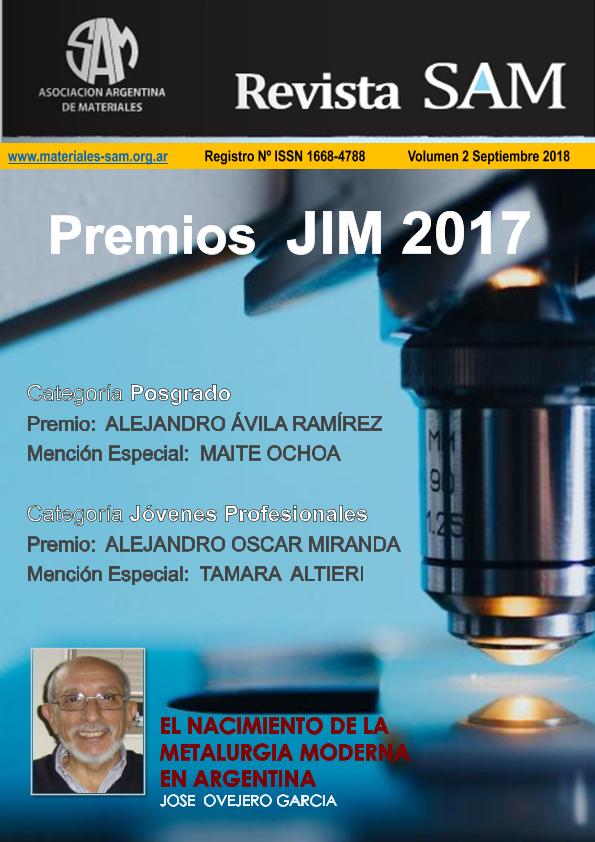Artículo
La nanocelulosa bacteriana (BNC) por sus excelentes propiedades mecánicas, alta relación superficie/volumen, biodegradabilidad y pureza, resulta de interés para aplicaciones como refuerzo de matrices poliméricas. Sin embargo, la hidrofilicidad de las nanofibras de celulosa limita su uso como refuerzo de matrices hidrofóbicas, como, por ejemplo, el ácido poliláctico (PLA). Con el objetivo de mejorar la compatibilidad entre el refuerzo y la matriz y promover la adecuada dispersión de las nanofibras en el PLA, se estudió la esterificación de la superficie de las nanofibras de celulosa bacteriana implementando una ruta no convencional catalizada por α- hidroxiácidos (ácidos láctico, tartárico y cítrico) de origen natural. Como acilante se utilizó anhídrido acético y se operó sin cosolventes agregados. La obtención de la BNC se llevó a cabo en cultivo estático usando una cepa de Gluconacetobacter xylinus y desechos agroindustriales como fuente de carbono. Se estudió la influencia del tipo de catalizador, el tiempo de reacción, la carga de catalizador y la temperatura de reacción sobre el grado de sustitución (GS) de la BNC, obteniéndose BNC con GS comprendidos entre 0.27 y 0.90. La mayor actividad catalítica se registró usando ácido cítrico. Debido a que se observó una ligera pérdida de cristalinidad en las muestras con DS superior a 0.75, se modificaron las condiciones de reacción a efectos de limitar el GS al rango de 0.20 y 0.73. Se evaluó, también, la posibilidad de reutilizar el catalizador. Los resultados obtenidos estimularon la extensión de la ruta de acetilación a nanocristales de celulosa vegetal (CNC). Variando la carga de catalizador, se obtuvieron CNC con GS entre 0.18 y 0.34. Los materiales se caracterizaron por FTIR y RMN13C CP/MAS. Se confirmó, además, que la acetilación no afectó la morfología (SEM) ni la cristalinidad (DRX) aunque se evidenció una leve disminución de la estabilidad térmica (TGA) de los materiales acetilados. Due to its excellent mechanical properties, high surface/volume ratio, biodegradability and purity, bacterial nanocellulose (BNC) deserves great interest as reinforcement of polymeric matrices. However,the hydrophilicity of BNC limits its use as reinforcement of hydrophobic matrices, such as for example polylactic acid (PLA). Aiming to improve the compatibility between BNC and polymeric matrices such as PLA and thus promote a proper dispersion of cellulose nanofibers, in the current contribution surface esterification of BNC was studied by use of a non-conventional route catalyzed by naturally occurring α-hydroxy acids (acids lactic, tartaric and citric). Acetic anhydride was used as acylant and the reaction was performed without additional solvents. BNC was obtained in static culture using a strain of Gluconacetobacter xylinus and using agroindustrial byproducts as a carbon source. The influence of the type of catalyst, reaction time, catalyst load and the reaction temperature on the degree of substitution (DS) conferred to BNC were studied, leading to products with DS between 0.27 and 0.90.The highest catalytic activity was recorded using citric acid. Since there was a slight loss of crystallinity in the samples with DS greater than 0.75, reaction conditions were tuned in order to keep the DS in the 0.20-0.73 interval. The possibility of reusing the catalyst was also evaluated. The results obtained triggered the evaluation of the acetylation route on cellulose nanocrystals (CNC) isolated from vegetable sources. By varying the catalyst load, CNC with DS between 0.18 and 0.34were obtained.The materials were characterized by FTIR and 13CNMR CP/MAS to confirm derivatization. Data showed that the acetylation did not affect the morphology (SEM) nor the crystallinity (XRD) of CNC, although a slight decrease in the thermal stability (TGA) of the acetylated materials was evidenced.
Hidrofobización organocatalítica de nanofibras y nanocristales de celulosa para aplicaciones en materiales compuestos biodegradables
Fecha de publicación:
09/2018
Editorial:
Asociación Argentina de Materiales
Revista:
Revista SAM
ISSN:
1668-4788
Idioma:
Español
Tipo de recurso:
Artículo publicado
Clasificación temática:
Resumen
Archivos asociados
Licencia
Identificadores
Colecciones
Articulos(ITPN)
Articulos de INSTITUTO DE TECNOLOGIA EN POLIMEROS Y NANOTECNOLOGIA
Articulos de INSTITUTO DE TECNOLOGIA EN POLIMEROS Y NANOTECNOLOGIA
Citación
Avila Ramirez, Jhon Alejandro; Cerrutti, Patricia; Errea, María Inés; Foresti, María Laura; Hidrofobización organocatalítica de nanofibras y nanocristales de celulosa para aplicaciones en materiales compuestos biodegradables; Asociación Argentina de Materiales; Revista SAM; 2; 9-2018; 4-9
Compartir




